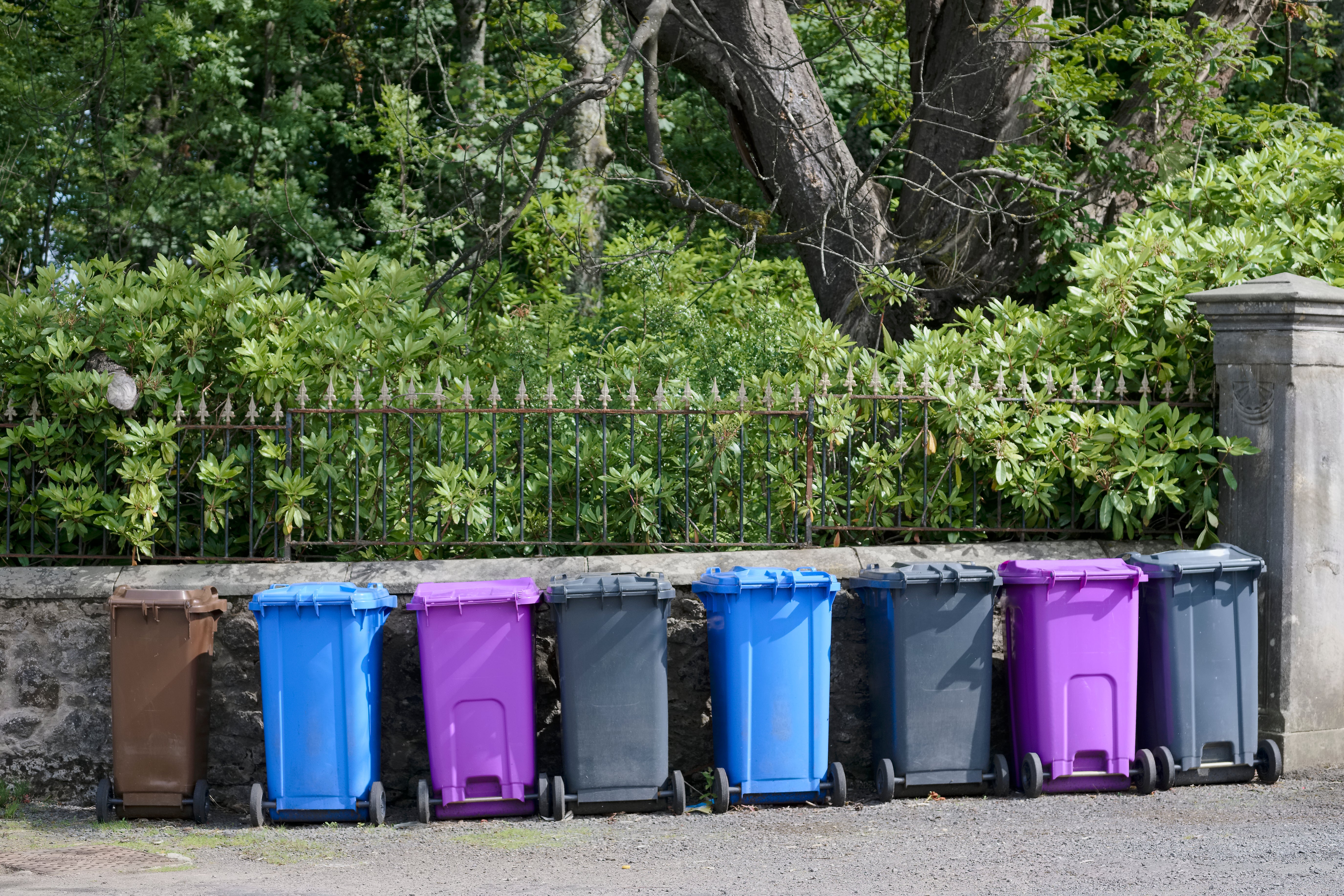Sunak’s net zero rollback was (very nearly) a good idea
It wasn’t all meat taxes and seven deadly bins, writes Sean O’Grady. Lurking within the prime minister’s botched new green plan is the nugget of a really quite sensible policy


Somewhere inside Rishi Sunak’s miserable green retreat was quite a good idea trying to get out – a more flexible approach to the transition to the new technologies.
The prime minister – understandably, as a practising democratic politician – highlighted how sustainable transitions to greener technologies have to enjoy consent. That’s correct. Those politicians who face elections – and, in particular, a difficult looming general election – tend to have their minds concentrated on the democratic conundrum more than most.
The solution to the dilemma isn’t just to go easy and postpone everything, though. A much more sensible strategy would be to dispel the scaremongering about bans and taxes, and make doubly sure people understand what is actually being asked of them – comparatively little, in reality.
Where there are nonetheless real practical and financial difficulties with the very gradual transition to zero-emission electric vehicles and heat pumps, then the answer is to provide generous support and a series of exemptions – but to nonetheless retain the targets. At the moment, everything seems very one-size-fits-all, and, as usual, it’s the worst off who get hit the hardest.
It doesn’t feel fair. Because of their nature, environmental taxes, costs and charges tend to be levied on behaviour, rather than income or wealth. “The polluter pays” is a fine principle – but what if the polluter isn’t Thames Water, but a pensioner on a modest income with a boiler beyond economic repair? That’s where Sunak had his germ of an idea and a new approach – but it’s being badly executed.
Instead of a more far-reaching overhaul, Sunak has chosen to put the brakes on a process that was actually proceeding fairly successfully.
It’s a good moment to bust some myths and show precisely how investing in renewable energy (wind, solar and nuclear), EVs and heat pumps can actually cut the cost of living: lower energy bills, lower fuel costs, lower running costs. Green, so far from being a performative indulgence of the prosperous classes, can be very good, in other words, for the hard-working families Sunak purports to want to help. It’s a case that is too rarely made.
So let us take our old friend the gas boiler. It was never, ever the case that someone from the council was going to come round to your house and rip your existing boiler out. The aim was to phase out the installation of new and replacement gas boilers, by 2035 at the latest. New homes would be only fitted with heat pumps (and be well suited to them). There was, though, a tighter deadline of 2026 for the oil-fired boilers used by many rural homes that never made it onto the gas network. That has now been postponed until 2035, no doubt to the relief of many. But the policy was still basically sound.
The idea was that when your gas or oil-fired boiler conked out and you’d have to buy a new one anyway, you would only be able to install a heat pump. This could be (usually) an air-source pump that bolts into the outside of your property, as near to the new boiler as possible, and it will then warm the water you need for heating and washing; cooking would probably move over to electric.
An alternative, for those with larger gardens or land, is a ground-source heat pump, drilled and buried underground. Both are electrically powered and work on the same principle as a refrigerator, using chemical reactions to amplify the difference in temperature inside the pump and the outside ground/air.
The economics of this look formidable at first, and would be challenging for some families in terms of initial outlay. Depending on the size and design of the property, a new air pump might cost £10,000, and a ground-source pump £20,000, as against £3,000 for a conventional boiler. Hence the fears.
But there were already grants in place to defray the cost, of £5,000, now raised to £7,500. For many, then, the cost of transition might be nil, though adjustments to radiator design and additional insulation would add costs back into the equation.
At the moment, given elevated electricity prices, the savings on usage would be small, if any; but if the nation’s electricity generation was shifted to renewables and nuclear, where the marginal costs of generating electrical power are virtually zero, then there’d be no reason why electricity tariffs would be low enough to make the new heat pumps a “no-brainer”.
The problem – with new wind farms, solar farms, nuclear power stations and new domestic pumps – is the initial upfront cost of the investment. But if the savings really are going to be as substantial as is being promised, then the state ought to be able to stand the cost of “borrowing to invest”.
The prize is a Britain with the lowest energy costs – for business and households – in Europe, home-generated, greatly boosting energy security, slashing business costs and household energy bills. What we save in our energy bills we could afford… a new electric car.
Indeed, EVs have the same economic problem as wind farms and heat pumps – the relatively high cost of entry. At the moment, it’s as much as £10,000 or so between an electric vehicle and the variant with a petrol or diesel engine. It would take the average motorist five to 10 years to make the investment back. New EVs are more costly than their petrol and diesel counterparts, but have radically lower running costs. So you can see the way the calculations might not work out in favour of a household sequencing to an EV.
But, as with gas boilers, there was never going to be a ban on them, with every petrol and diesel car and van swept off the highways and scrapped on 1st January, 2030. The “ban” was confined to new cars, and thus to only one in five purchasers. If, like many, you only spend a few thousand pounds on a conventional used car, then you’ll still be able to buy a second-hand petrol VW Golf in 2030, 2035 and, for all we know, 2123, for that matter.
The shameful thing is that Sunak seems to have bought into the notion that, when the time came to trade in the Clio or the Corolla, everyone was about to be forced to spend £59,000 on a new Tesla. It’s not true, and never was – like his imaginary seven recycling bins.
Besides, EVs are getting better and relatively cheaper all the time, and more and more, and cheaper, second-hand ones will make their way into the market. The price differential with internal combustion engine cars will probably disappear.
There’ve been some silly articles written about EVs lately – and, admittedly, these vehicles won’t suit everyone – but their range and reliability is very good those days, with 200 miles-plus on a single full charge perfectly normal (and at which point any driver should have a coffee break to recharge themselves and their vehicle).
As with heat pumps, there’s little to be frightened of – and with fossil fuels getting more expensive and green energy getting cheaper, the economics will tip in their favour.
So why should the government do anything? Well, because it’s good for the planet, but also because the state is uniquely placed to assist with the initial costs of investing in green renewables, heat pumps and cars. Not everyone is an early adopter, people like what they are familiar with, and no one wants to be left stranded on the motorway or shivering in their home because of some unfamiliar technology they don’t trust.
Where the old policy did go wrong was in being too crude. The new green technologies aren’t for everyone. One group, for example, who are particularly disadvantaged are the fifth of us who live in flats. Up there on the tenth floor, you’re not going to be able to plug your electric car in outside, and fitting an air pump might be a bit tricky, too.
For what it’s worth, personally I’d try and find a way to allow those people to carry on with fossil fuels, until better technological solutions (such as combined heat and power schemes or giant collective ground-source pumps) became viable. I’d even permit the tiny number of people in ancient listed buildings to burn coal and wood, because that’s what works best in, say, an Elizabethan cottage or a Jacobean mansion.
Georgian and Victorian terraces, in principle the best homes the British ever built, also need some special attention in their conversion to new technologies. They were, after all, designed to be draughty and don’t work at all well with too much insulation. But anything built after about 1960 should be suitable for rapid conversion.
But Sunak hasn’t done that, but merely eased some one-size fits all targets that will become problematic for many of us in 2035 rather than 2030, say, at which point some other opportunist politician will just push the deadline back another five years, and then another and then… it’s 2050 and it’s all too late.
We really need, dare I say it, is a more intelligent, flexible policy that takes far more account of the huge differences in people’s lifestyles, homes and indeed their incomes. They do need to be listened to. That’s really the way to gain consent and make the green transition perfectly viable and indeed financially rewarding for all.
Join our commenting forum
Join thought-provoking conversations, follow other Independent readers and see their replies
Comments


Bookmark popover
Removed from bookmarks